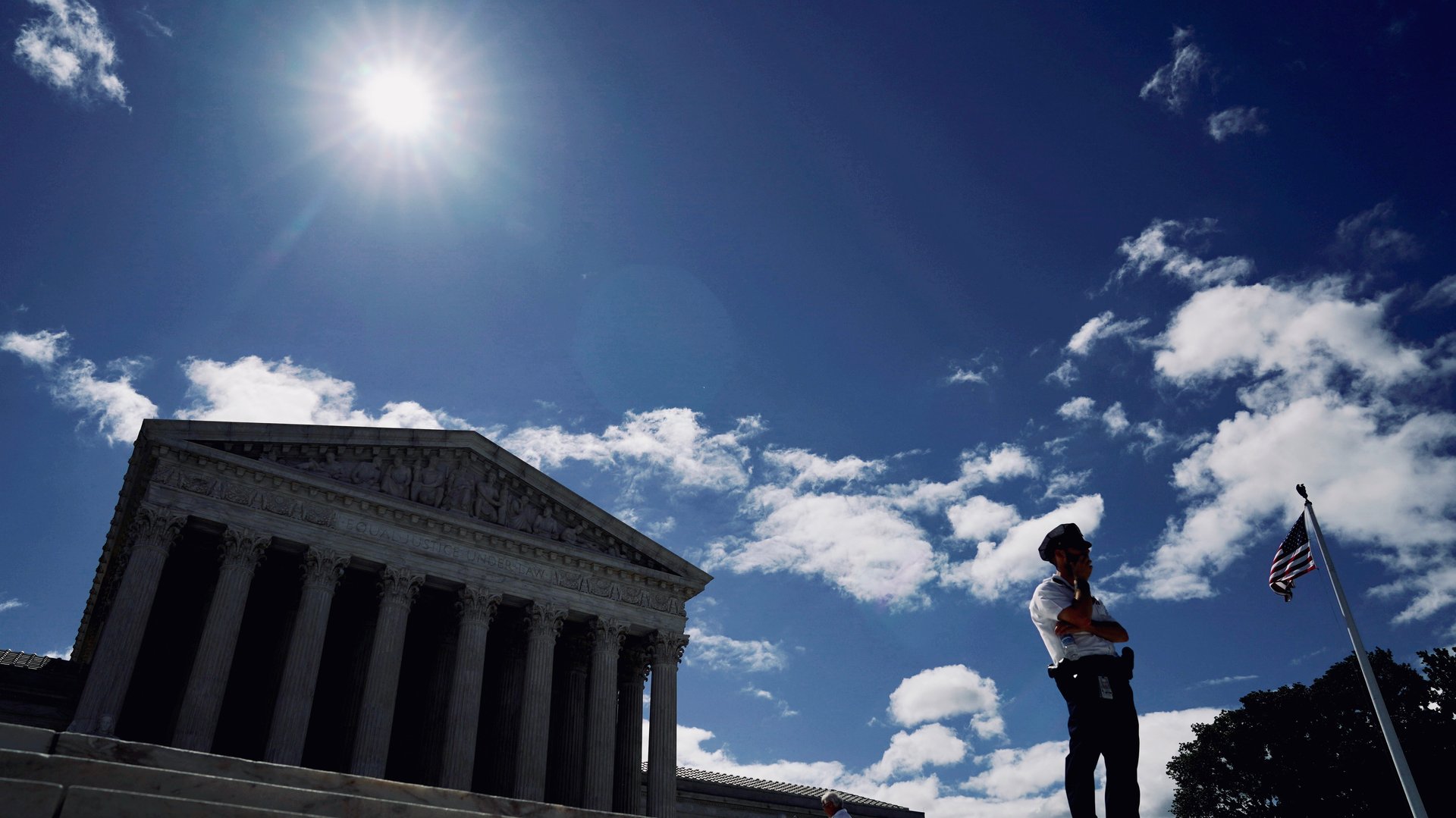The US Supreme Court says partisan gerrymandering is not its problem
The US Supreme Court today decided two cases (pdf) about partisan gerrymandering that the nation’s political buffs had awaited breathlessly. Consolidating the two matters out of Maryland and North Carolina, the majority determined that district rigging is a “nonjusticiable political question.”


The US Supreme Court today decided two cases (pdf) about partisan gerrymandering that the nation’s political buffs had awaited breathlessly. Consolidating the two matters out of Maryland and North Carolina, the majority determined that district rigging is a “nonjusticiable political question.”
In other words, it’s not for the high court to decide whether districts were inappropriately rigged to favor representation for a particular political party. Still, chief justice John Roberts wrote in the majority opinion that the decision to send the matters back to the lower courts to be vacated for lack of jurisdiction shouldn’t be confused with court support for partisan gerrymandering. The court simply could not expand its powers, he concluded. But states can and should—and some already are—address gerrymandering through their own constitutions and legislatures. He writes:
The conclusion that partisan gerrymandering claims are not justiciable neither condones excessive partisan gerrymandering nor condemns complaints about districting to echo into a void. Numerous States are actively addressing the issue through state constitutional amendments and legislation placing power to draw electoral districts in the hands of independent commissions, mandating particular districting criteria for their mapmakers, or prohibiting drawing district lines for partisan advantage. The Framers also gave Congress the power to do something about partisan gerrymandering in the Elections Clause. That avenue for reform established by the Framers, and used by Congress in the past, remains open.
Roberts was joined by the conservative wing of the court—Clarence Thomas, Samuel Alito, Neil Gorsuch, and Brett Kavanaugh. The chief justice noted that there was no appropriate standard for judging partisan gerrymandering cases under constitutional law. He said that turning to racial gerrymandering tests for guidance wouldn’t serve because discrimination based on race is subject to the strictest scrutiny for violating the 14th Amendment’s Equal Protection Clause. “Unlike partisan gerrymandering claims, a racial gerrymandering claim does not ask for a fair share of political power and influence, with all the justiciability conundrums that entails,” Roberts wrote.” It asks instead for the elimination of a racial classification. A partisan gerrymandering claim cannot ask for the elimination of partisanship.”
Elena Kagan wrote a dissent, joined by the court’s liberal wing, which includes Ruth Bader Ginsburg, Sonia Sotomayor, and Stephen Breyer. Kagan noted in her dissent that the majority’s conclusion simply shirked a duty to rule in her view. She writes:
For the first time ever, this Court refuses to remedy a constitutional violation because it thinks the task beyond judicial capabilities. And not just any constitutional violation. The partisan gerrymanders in these cases deprived citizens of the most fundamental of their constitutional rights: the rights to participate equally in the political process, to join with others to advance political beliefs, and to choose their political representatives. In so doing, the partisan gerrymanders here debased and dishonored our democracy, turning upside-down the core American idea that all governmental power derives from the people.
Kagan believes that the court can and should address the difficult question of how much partisan gerrymandering is too much. She said the court was abdicating its duty at a crucial time in American politics.
Roberts addressed her criticisms in a footnote in the majority opinion. He agreed with Kagan’s assessment that partisanship was viewed as suspect by the Constitution’s framers but not with her proposed remedy of judicial review. He wrote: “The dissent’s observation that the Framers viewed political parties ‘with deep suspicion, as fomenters of factionalism and symptoms of disease in the body politic’ is exactly right. Its inference from that fact is exactly wrong. The Framers would have been amazed at a constitutional theory that guarantees a certain degree of representation to political parties.”
Now the matters will go back to state hands for legislators to work out. On this last day of the high court’s term, the justices managed to avoid an uproar about gerrymandering by essentially deciding not to decide.